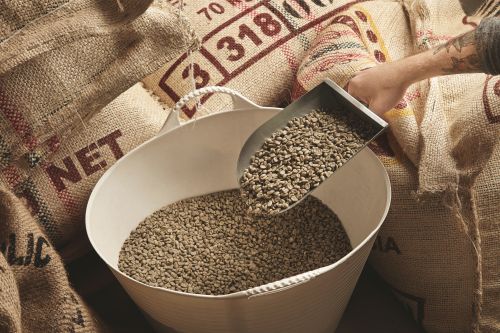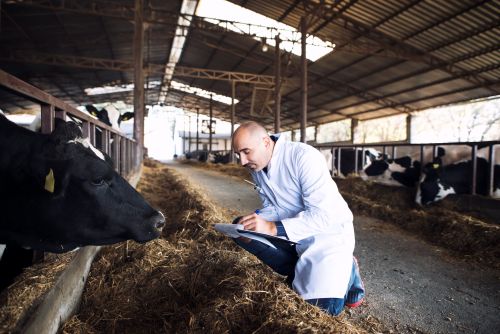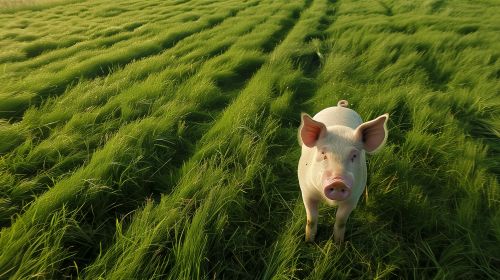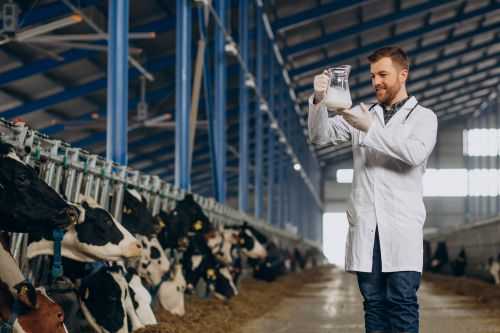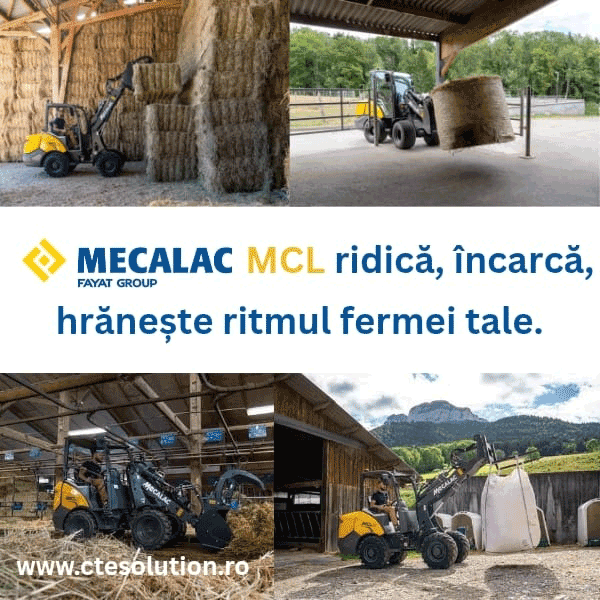698
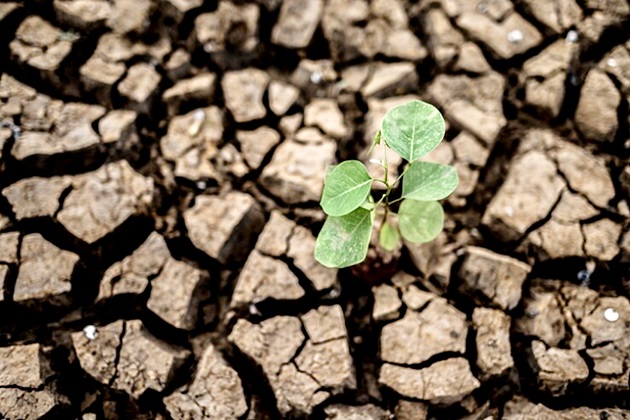
As the world prepares to implement decisions on climate change at COP28, in a year of rising temperatures and progressive extreme weather events, attention is turning to innovative solutions to address the climate crisis, as shown in the latest analysis on this topic conducted and published by the FAO.
Urgent measures are needed
Scientists from the Intergovernmental Panel on Climate Change (IPCC) stated this earlier this year: effective solutions for mitigating and adapting to climate change involve developing climate-resilient measures, including in the food and agricultural sectors.
While agri-food systems contribute to about one-third of greenhouse gas emissions, they also hold tremendous potential for positive action on climate change. The key challenge is finding ways to feed a growing population while simultaneously reducing carbon footprint and environmental impact.
COP28 will serve as a link for leaders representing governments, businesses, NGOs, and civil society to find concrete solutions collaboratively, with the Food and Agriculture Organization (FAO) leading this effort.
Before the international meeting, we spoke with Kaveh Zahedi, the Director of the FAO Office of Climate Change, Biodiversity, and Environment (OCB), who highlighted some of the key messages the organization will convey during this COP, emphasizing the importance of having a day dedicated to food, agriculture, and water.
Solutions for agri-food systems bring multiple benefits, including climate action
Amid the increasing impact of climate change and slow progress in reducing greenhouse gas emissions, sustainable agri-food system practices can help countries and communities adapt, build resilience, and mitigate emissions, ensuring food security and nutrition in a world where approximately 735 million people suffer from hunger while also reversing environmental degradation.
"We already have solutions to address climate change, and many of these solutions, whether it's agroforestry, soil restoration, sustainable animal husbandry, or fisheries management, have multiple benefits because they can also support the sustainable use of biodiversity as well as help with food security. These are multiple benefits from the same solutions that only agriculture and food systems provide," explains Zahedi.
At COP, FAO will present some unique initiatives of agri-food systems with examples of projects demonstrating on-the-ground change. "We want to do everything we can to ensure climate finance flows to these solutions," he adds.
Without a major increase in finances, reducing the vulnerability of people working in agriculture and food systems and reducing emissions in the sector simply won't happen (16 billion tons of emissions were emitted in 2021 alone), warns Zahedi.
Agri-food systems and negotiations
FAO will also support countries working hard on these issues through official negotiations and the Sharm el-Sheikh work on implementing climate action in agriculture and food security.
"This joint work is very important because it brings the discussion about agriculture, about food systems, to some extent, to the center of the negotiation process and allows us to talk about the solutions that this sector offers for climate," Zahedi explains.
At COP28, countries will negotiate a work plan for this joint effort, including a coordination structure within the United Nations Framework Convention on Climate Change (UNFCCC). Negotiators will also explore funding opportunities.
"We also support the future presidency of COP28, which has made food and agri-food systems an important part of this year's climate discussions. There's a leader's statement that they hope to present, and we will support them in doing so.
We will be there on the first day when leaders discuss food and agriculture in the context of climate change, and we will be there on the Food, Agriculture, and Water Day, on December 10, where we and many of our partners will be present, talking about the numerous solutions that agriculture and food systems offer for climate change."
Although it is an expected but unnegotiated outcome of COP28, the Emirate's Declaration on resilient food systems, sustainable agriculture, and climate action provides a welcome boost to increased investments and expanded agri-food system solutions to climate change that can build resilience and reduce emissions while addressing food security.
An analysis of losses and damages
Another critical discussion on this year's agenda is related to the establishment of a Loss and Damage Fund agreed upon at COP27 last year, a significant milestone after decades of calls from developing nations.
The purpose of the fund is to provide financial assistance to countries most affected by climate change and who have contributed the least. At COP28, nations will discuss the details of how this initiative can be operational.
To highlight how agri-food systems are at the forefront of losses, FAO will publish the Loss and Damage report and Agri-food Systems – Continuing Climate Action in the early days of COP.
"We will go to COP already equipped with an analysis showing what loss and damage mean for agriculture, for food systems, for the communities that depend on them, as a way of maintaining momentum towards this fund that is under development and discussed and redirecting investments to where they are truly needed, to the most vulnerable, many of whom are within communities working in food and agriculture," says the expert.
For him, the Loss and Damage Fund will be vital to help those communities overcome challenges that already affect their lives and livelihoods.
"We can't take our eyes off the ball of mitigation; emissions must decrease. At the same time, we must face adaptation because the climate is changing. But there comes a stage where adaptation is no longer possible, and that's where losses and damages come in. This fund will be vital to help people, communities, especially agricultural and farming communities, who are in the last stage of this climate impact challenge," he explains, saying that seeing the fund in action would be one of the "celebratory victories" at the end of COP28.
Agri-food systems and the global balance
This year, governments will also make a decision on the first global balance, part of the Paris Agreement and a key means of assessing the world's global response to the climate crisis and finding a better way forward.
UNFCCC recently released a synthesis report designed to help governments reach a decision on the global balance at COP28, which is party-driven and can be used to accelerate global ambition in the next round of climate action plans, scheduled for 2025.
"In a way, the balance tells us what we already knew: that we are far off track, that countries have not yet reached their level of ambition in terms of building resilience, in terms of adapting to a changing climate, but also in terms of reducing greenhouse gas emissions and mitigating. So, we are off course to achieve, in a way, the aspirations of the Paris Agreement," explains Zahedi.
However, he says, the global balance also tells us about the importance of seeking system changes.
"Among these system changes, the transformation of agri-food systems is paramount. The balance is an opportunity to remind everyone that, although all these solutions have been identified and to some extent tested, they have not yet been invested in at a scale that matches their potential."
Exploring solutions
It is possible to have better production, better nutrition, a better environment, and support better lives all at once, the expert explains.
"So, we are working on solutions that address the challenges of food security, climate change, and biodiversity loss at the same time."
For instance, sustainable land management, agriculture, and forestry can enhance the ability to produce food in a way that does not harm biodiversity, contributing at the same time to increased resilience, carbon storage, and reduced greenhouse gas emissions.
Agroforestry has the potential to increase food security for over a billion people by increasing available nitrogen in the soil for crops, increasing soil carbon storage, halving soil erosion rates, and boosting ecosystem services.
Meanwhile, improving the management of agricultural land and grazing systems could mitigate several gigatons of CO2 equivalent per year and, at the same time, improve food security.
"About a third of agricultural land is currently degraded. You can imagine the potential of restoring this agricultural land in terms of food security but also in terms of building resilience, adaptation, and, of course, mitigating emissions," he adds.
Energy-smart agriculture can also help reduce emissions from energy use in the agri-food sector, improve energy efficiency and sustainability in agriculture, and capitalize on opportunities for bioenergy production from agricultural by-products. "These are just a few examples of solutions offered," Zahedi emphasizes.
How FAO contributes to developing solutions
Guided by the climate change strategy developed by FAO member countries, each part of FAO has expanded support for climate change to countries in all sectors.
For example, since 2006, FAO's partnership with the Global Environment Facility has supported over 130 countries to improve the sustainability of their agri-food production and deliver environmental outcomes. FAO-GEF investments in the last four years have placed 116 million hectares of land and marine landscape under improved management, mitigating 570 million tons of greenhouse gas emissions (GHGs), equivalent to taking 128 million cars off the road.
"These investments have helped improve the lives of 13 million people with green jobs, healthier diets, and greater capacity to be stewards of the environment," explains the expert.
Similarly, the strong partnership between FAO and the Green Climate Fund has unlocked $1.2 billion in funding for climate actions for projects in developing countries. The diverse and broad range of projects enhances livelihoods and food security with climate-resilient crops, agroforestry, sustainable fisheries, and better land and water management.
From restoring degraded ecosystems to reforesting vast forest areas, these GCF-led projects by FAO help countries turn mitigation and adaptation solutions into actions that benefit people and the planet.
The Benefit-sharing Fund of the FAO International Plant Treaty has benefited over one million people so far. Through projects, over 200 agricultural schools have been established to provide bottom-up interactive learning platforms to implement, access, and develop climate-resilient crops.
Meanwhile, the FAO SAGA project helps transform plans and ambitions into local actions. For example, in northeastern Senegal, the project collaborated with producers to use traditional agroecology practices known as Gulle Kisnal to help conserve increasingly scarce water through a half-moon mini-basin, reducing evaporation and runoff while maintaining crop yields.
"We will go to COP28, and we will have a pavilion with many of our partners – CGIAR, IFAD, the Rockefeller Foundation – and together we will present many initiatives that make a difference in people's lives regarding the use of agri-food systems as a response to the climate crisis. And I hope that will keep the momentum," emphasizes Zahedi.
A look into the future
Kaveh Zahedi has spent his entire career in various leadership positions, focused on environmental efforts, ecological technology, and development. Asked whether we should be hopeful or hopeless for the future, given his experience, the head of FAO for Climate, Biodiversity, and Environment says there are many positive things to highlight.
"Now we understand that how climate change is undermining hard-won development gains. And I think that's an understanding that did not exist a decade ago, and certainly did not exist two decades ago. So, I see real progress in that regard."
He adds that he has also seen many changes in terms of integrating agendas, with climate change now at the center of conversations about nutrition and biodiversity, for example.
"We hope to actually come to COP with an even clearer understanding of agri-food system solutions that can help us move towards the 1.5-degree warming target and achieve Sustainable Development Goal 2 (Zero Hunger)."
However, he says, the only thing that makes him less hopeful is that funding and investments are still lacking, even when the potential of agri-food system solutions is so great.
"A very small proportion of climate finance is allocated to agri-food system solutions. If you look globally at all climate finances, public, private, at the project level, it's about four percent.
If you take a narrower lens and look at development finance earmarked for climate, less than 20% is allocated to agri-food system solutions, and that percentage is declining. There are fewer and fewer investments in solutions that offer such clearly massive benefits in terms of climate change."
